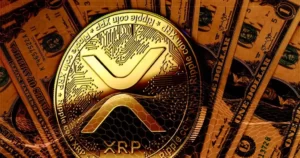Once upon a time in 2017, the Durov brothers embarked on an exciting journey with the Telegram Open Network, or TON for short. Their mission? To create a blockchain that would bring cryptocurrencies to the masses, welcoming 500 million Telegram users into the world of decentralized applications. With a slew of innovative features, TON held the promise of transforming the digital landscape.
The Dream and ICO Triumph
TON’s visionary design boasted features like shardchains, self-recovery mechanisms, decentralized data storage, and privacy tools, making it a game-changer. To fund this ambitious project, Telegram held a private Initial Coin Offering (ICO) for their native token, Gram, in 2018. This ICO was a massive hit, raising a jaw-dropping $1.7 billion from prominent investors, including Silicon Valley giants.
However, this triumph was overshadowed by the harsh reality of regulatory scrutiny. In 2019, the U.S. Securities and Exchange Commission (SEC) sued Telegram, claiming that their ICO was an illegal securities offering. They argued that initial Gram purchasers would be acting as unregistered securities underwriters.
The Legal Battle
After a lengthy legal battle, in June 2020, a federal court ruled against Telegram. They were prohibited from issuing any tokens and had to pay $18.5 million in penalties while refunding investors. This situation left many scratching their heads, including Pavel Durov, the founder and CEO of Telegram, who likened it to a strange gold mine analogy.
Passing the Torch to the Community
Following this legal setback, Telegram announced the end of its involvement with TON. But before leaving, they made the project’s source code available on GitHub, encouraging the community to carry the torch forward.
The Technology Behind TON
Although TON’s original vision didn’t materialize, it gave birth to two competing networks. To understand these new networks, let’s delve into TON’s technology.
- TON Blockchain: Designed with three layers, the TON Blockchain promises mind-blowing transaction throughput and high scalability. It featured master chains, work chains, and shardchains to handle different aspects of the network.
- TON Self-Recovery Mechanism: This innovation allowed TON to create new blocks over invalid ones, avoiding network splits and reducing errors.
- TON DNS: Similar to Ethereum Name Service, TON DNS offered human-readable names for accounts, smart contracts, and network nodes, making blockchain more user-friendly.
- TON Proxy: Anonymity layer for TON nodes, enabling decentralized VPN services and privacy tools.
- TON Payments: A built-in payments processing network for secure off-chain money transfers.
- TON Storage: A distributed data storage network, striving to be a better version of Dropbox.
- TON Services: A platform for third-party apps built on top of TON Blockchain, designed for ordinary users.
The Battle for TON’s Legacy
With Telegram’s exit, two rival groups, Newton and Free TON, continued their versions of TON, leading to conflicts. Newton (now The Open Network) requested Telegram’s original GitHub repository and ton.org domain, emphasizing their commitment to preserving TON’s core technology. Free TON initially registered the TON trademark but later backed off and rebranded to Everscale.
The Open Network Wins the Title of TON Successor
After these battles, The Open Network, endorsed by Pavel Durov, emerged as the rightful successor of TON. Durov praised the developers’ commitment to the TON project, now rebranded as Toncoin, highlighting its ongoing evolution and scalability.
Two Blockchains, Two Tokens
Both projects, Everscale and The Open Network, have their own tokens, EVER and TON. TON’s unique journey included initial proof-of-work mining, attracting users to the blockchain.
Also read: Exploring the World of Decentralized Applications (dApps)
The Future
Durov’s endorsement marked the end of rivalry, but both projects still have distinct paths to follow. Everscale must establish itself in the crypto market independently, while The Open Network’s connection to Telegram might invite further scrutiny from regulators.
In the world of blockchain, where technology evolves rapidly, only time will tell who will truly prevail in the legacy of TON.



